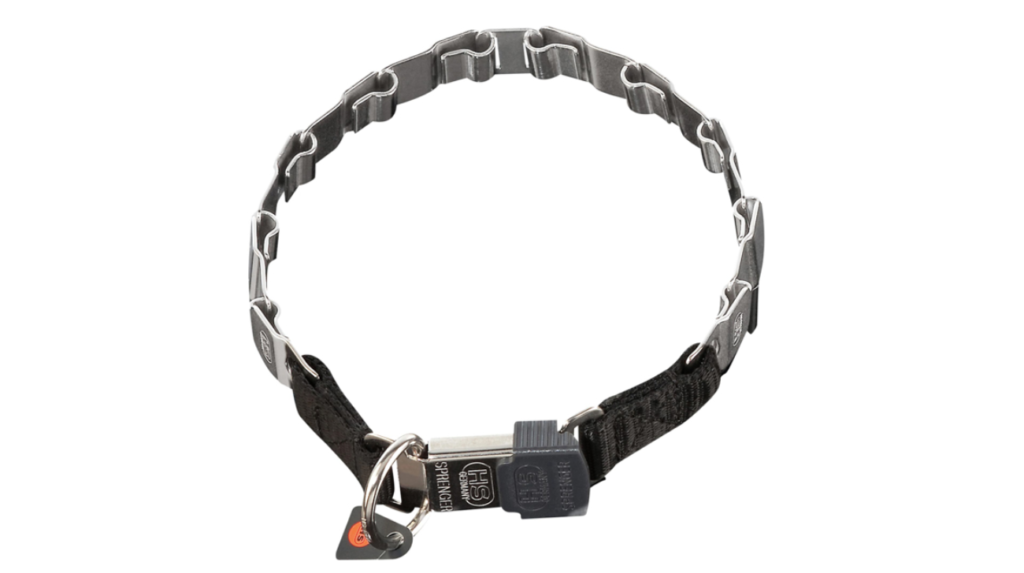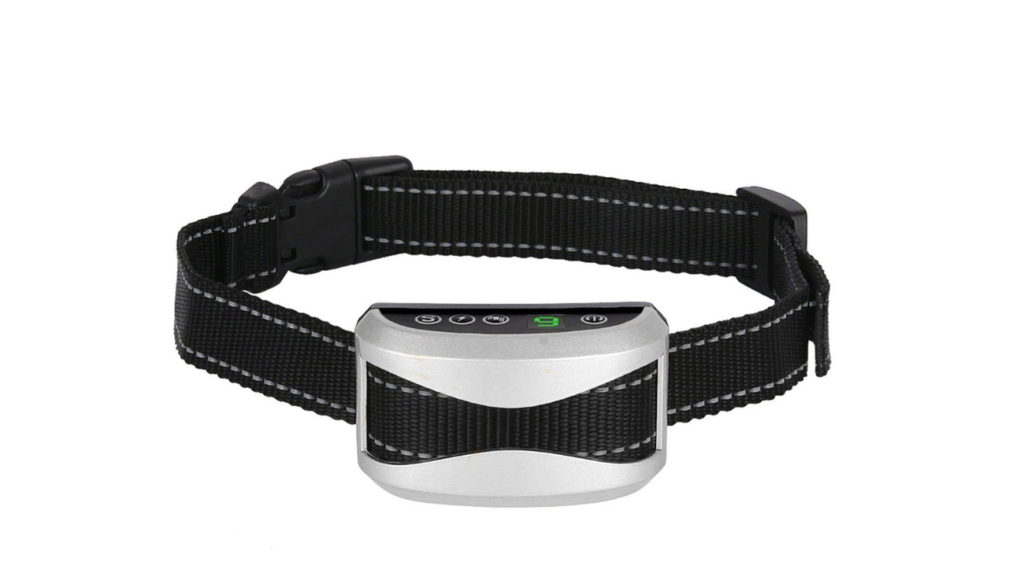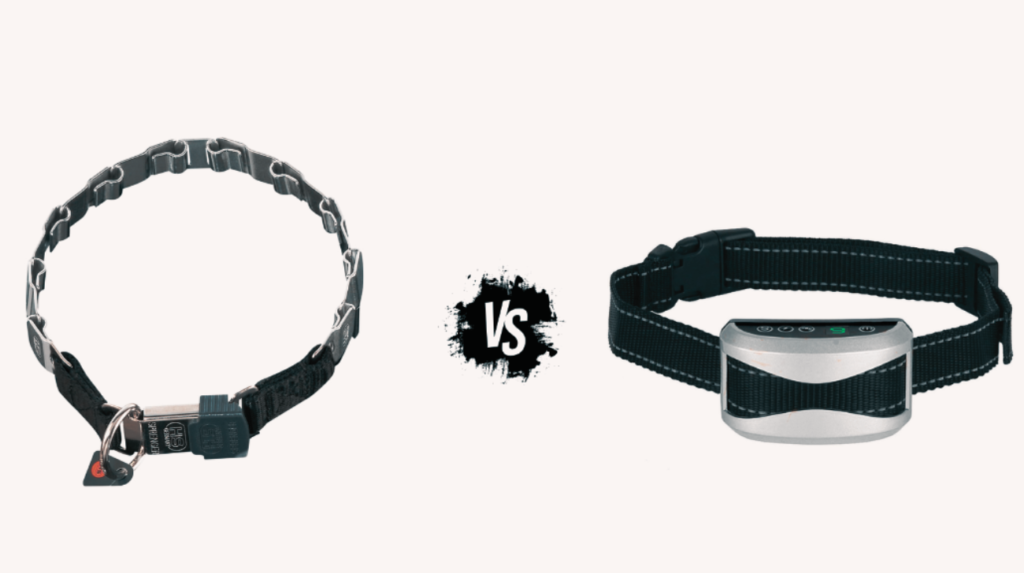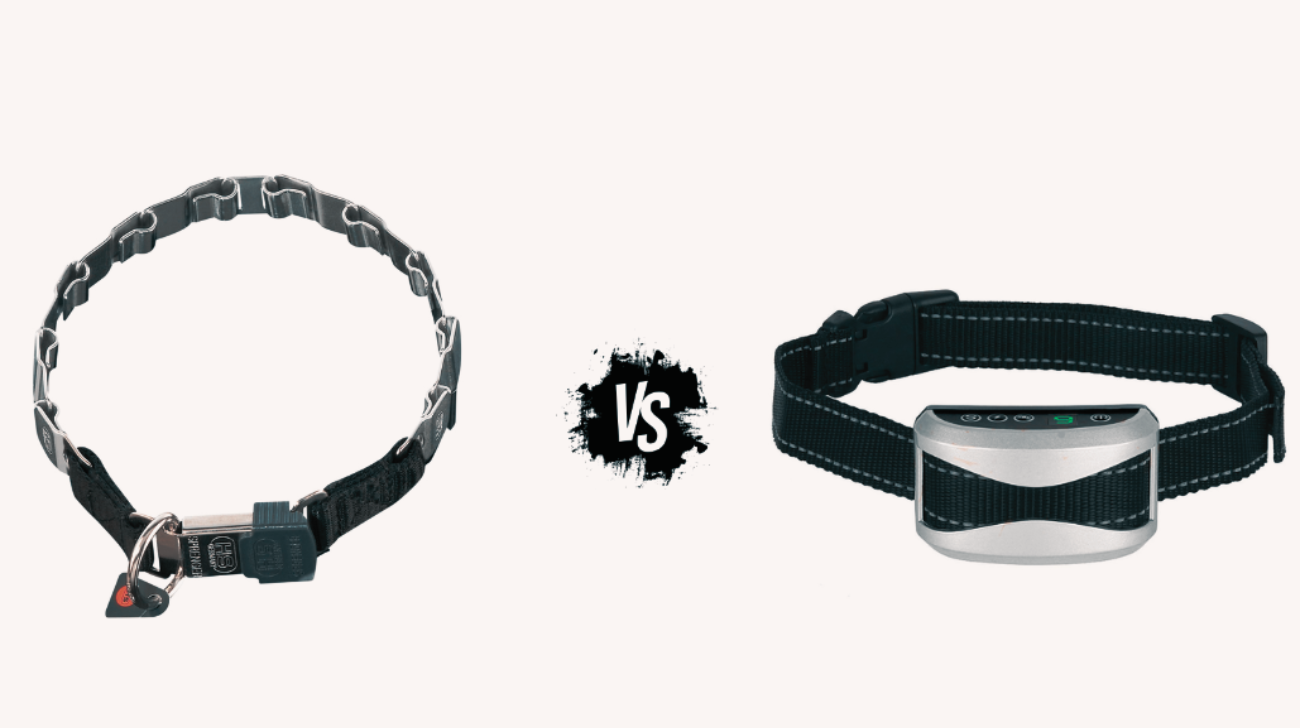Modern pet training tools offer a wide range of options to address different behavioral needs and training goals. Among these, TENS (Transcutaneous Electrical Nerve Stimulation) collars and shock collars are two popular choices. While both tens collar vs shock collar use electrical stimulation, they differ significantly in their purpose, application, and effect on your dog. Discover if the American Eskimo is a guard dog and learn about its suitability for protecting your home.
Understanding the differences between a TENS collar and a shock collar is crucial to making an informed decision that prioritizes your dog’s safety, comfort, and well-being. This guide explores the features, benefits, and drawbacks of each collar type, providing expert insights to help you determine which option is most suitable for your dog.
My Personal Opinion
As someone who values humane and effective training methods, I believe the choice between a tens collar vs shock collar depends on the specific training goals and your dog’s temperament. TENS collars are designed to provide gentle, non-painful stimulation, making them a better choice for dogs with sensitive dispositions or when desensitizing to distractions.
Shock collars, on the other hand, can be effective for deterring dangerous behaviors but require careful handling to avoid causing fear or stress. Ultimately, the choice should align with your training philosophy and your dog’s individual needs.
Blog Highlights
ToggleWhat Is a TENS Collar?
A TENS collar is a type of training device that uses Transcutaneous Electrical Nerve Stimulation (TENS) technology to deliver low-level electrical pulses to your dog’s skin. Unlike traditional shock collars, TENS collars are designed to stimulate nerves without causing pain, mimicking the sensation of gentle muscle contractions or vibrations.

Learn about the size collar for an American Eskimo to ensure a perfect fit and comfort for your dog.
Key Features of a TENS Collar:
- Non-Painful Stimulation: TENS collars emit electrical signals that are designed to stimulate nerves rather than cause discomfort or pain. This makes them suitable for dogs with sensitive temperaments.
- Adjustable Intensity: These collars typically offer a range of intensity levels, allowing you to customize the stimulation based on your dog’s size, sensitivity, and training needs.
- Multiple Modes: In addition to electrical stimulation, many TENS collars include options like vibration, sound, or light to provide alternative cues.
- Safety Mechanisms: TENS collars often include safety features, such as automatic shutoff or adjustable time limits, to prevent overstimulation.
Benefits of a TENS Collar:
- Gentle Training Aid: The non-painful stimulation is ideal for dogs that are easily frightened or reactive, providing a humane way to redirect unwanted behaviors.
- Customizable Settings: The ability to adjust intensity levels ensures that the collar can be tailored to your dog’s specific needs, promoting effective and safe training.
- Desensitization and Focus: TENS collars are particularly effective for desensitizing dogs to distractions or teaching them to focus in high-stimulation environments.
- Multipurpose Use: With additional features like vibration and sound, TENS collars can be used for a variety of training scenarios, from basic commands to behavior modification.
Limitations of a TENS Collar:
- Limited Effectiveness for Severe Behaviors: TENS collars may not be as effective for addressing serious behavioral issues, such as aggression or excessive barking, where stronger deterrents are required.
- Requires Proper Use: To avoid confusion or ineffectiveness, the collar must be used consistently and correctly during training sessions.
- Higher Cost: TENS collars are often more expensive than traditional shock collars due to their advanced technology and additional features.
What Is a Shock Collar?
A shock collar, also known as an e-collar or remote training collar, delivers a short burst of electrical stimulation to your dog’s neck. These collars are commonly used to deter unwanted behaviors, such as barking, aggression, or wandering.

Discover why Afghan Hound collars are wide by exploring the unique characteristics of this breed and how wide collars enhance their comfort and style.
Key Features of a Shock Collar:
- Electrical Stimulation: Shock collars deliver varying levels of electrical shocks to correct or interrupt unwanted behaviors.
- Adjustable Intensity: Most shock collars allow the intensity of the stimulation to be adjusted, providing flexibility based on the dog’s size, behavior, and training needs.
- Remote Control: Many shock collars come with a handheld remote, allowing you to activate the stimulation manually from a distance.
- Additional Modes: Some shock collars also include vibration, sound, or tone options as non-electrical alternatives.
Benefits of a Shock Collar:
- Effective for Severe Behaviors: Shock collars can be highly effective for addressing dangerous or extreme behaviors, such as chasing wildlife or aggressive tendencies.
- Immediate Feedback: The ability to deliver immediate correction ensures that your dog associates the stimulus with the undesirable behavior.
- Remote Training: The remote control feature allows for off-leash training or managing behaviors from a distance, increasing versatility.
- Cost-Effective: Shock collars are often more affordable than advanced training devices like TENS collars.
Limitations of a Shock Collar:
- Potential for Pain: The electrical shocks delivered by these collars can cause discomfort or pain, particularly at higher intensity levels.
- Risk of Fear or Stress: Improper use of a shock collar can lead to fear, anxiety, or aggression in some dogs, especially if corrections are poorly timed or too frequent.
- Requires Experienced Handling: Shock collars should only be used by individuals with a clear understanding of training principles to avoid unintended harm or confusion.
- Ethical Concerns: The use of shock collars is controversial, with many experts advocating for positive reinforcement techniques instead.
Comparing TENS Collar vs Shock Collar: Key Differences
Understanding the key differences between tens collar vs shock collar is essential for making an informed decision that aligns with your training philosophy and your dog’s needs. Here’s a side-by-side comparison:
Major Differences Between TENS Collar vs Shock Collar
To further understand how TENS collars and shock collars differ, let’s delve deeper into aspects such as design, comfort, safety, training effectiveness, and suitability for different dogs.

1. Design and Stimulation
TENS Collar:
A TENS collar uses low-level electrical pulses to stimulate nerves and muscles, mimicking therapeutic devices used in physical therapy for humans. The design prioritizes comfort, with adjustable settings to ensure that the stimulation is gentle and non-painful.
Shock Collar:
A shock collar delivers short bursts of electrical stimulation, ranging from mild to intense, to interrupt undesirable behaviors. The design is more straightforward, often focusing on functionality rather than comfort.
Key Difference:
TENS collars prioritize gentle stimulation and comfort, making them suitable for sensitive dogs, while shock collars are designed for stronger behavioral corrections, with a higher risk of discomfort.
Find out what style dog collar is best for hounds to ensure comfort and safety for your furry friend.
2. Comfort and Safety
TENS Collar:
TENS collars are designed with safety mechanisms to prevent overstimulation. The low-level stimulation is unlikely to cause pain or stress, making these collars a safer choice for most dogs.
Shock Collar:
Shock collars, while adjustable, can cause discomfort or pain, particularly if used at high intensity or for extended periods. Improper use increases the risk of stress or anxiety in dogs.
Key Difference:
TENS collars are inherently safer and more comfortable for dogs, while shock collars require careful handling to minimize risks.
3. Training Effectiveness
TENS Collar:
TENS collars are highly effective for mild to moderate training needs, such as desensitizing a dog to distractions or reinforcing focus. They are less effective for addressing severe behavioral issues.
Shock Collar:
Shock collars are effective for deterring severe behaviors, such as chasing wildlife, excessive barking, or aggression. However, their effectiveness depends heavily on proper timing and use.
Key Difference:
TENS collars are ideal for gentle training and behavior redirection, while shock collars are better suited for managing extreme behaviors that require immediate correction.
4. Ethical Considerations
TENS Collar:
TENS collars are generally considered humane, as they avoid causing pain or discomfort. Their use aligns with positive reinforcement training principles.
Shock Collar:
Shock collars are controversial due to their potential to cause pain, stress, or fear. Many trainers and organizations advocate against their use, favoring positive reinforcement methods.
Key Difference:
TENS collars are widely accepted as ethical training tools, while shock collars are subject to criticism and debate.
The ideal size collar for English Springer Spaniel typically ranges from 14 to 20 inches, depending on the dog’s age and neck size, ensuring a comfortable and secure fit.
Using the Tools Safely: Essential Tips
Whether you choose a tens collar vs shock collar, proper usage is crucial to ensure your dog’s safety and comfort. Here are some tips for using both tools effectively:

How to Use a TENS Collar:
- Choose the Right Settings:
Start with the lowest intensity and gradually increase as needed. Monitor your dog’s response to ensure the stimulation is effective but not distressing. - Use for Training, Not Punishment:
TENS collars should be used to reinforce positive behaviors and redirect unwanted actions, not as a punitive measure. - Regularly Monitor:
Check for signs of irritation or discomfort. Adjust the collar’s fit and settings as needed to ensure your dog’s comfort. - Pair with Positive Reinforcement:
Combine the collar with treats, praise, and rewards to create a positive association with training.
How to Use a Shock Collar:
- Start with Low Intensity:
Begin with the lowest setting and gradually increase if necessary. Avoid using high-intensity levels unless absolutely required for safety. - Ensure Proper Fit:
The collar should fit snugly but not tightly around your dog’s neck. Improper fit can cause irritation or reduce effectiveness. - Limit Use:
Use the shock collar only when necessary and avoid prolonged or frequent use to prevent stress or anxiety. - Learn Proper Timing:
Deliver corrections immediately after the undesirable behavior to ensure your dog associates the correction with the behavior. - Consult a Professional:
If unsure about using a shock collar, consult a professional dog trainer to learn safe and effective techniques.
FAQs: TENS Collar vs Shock Collar
1. What is the main difference between a TENS collar and a shock collar?
A TENS collar uses low-level electrical pulses to stimulate nerves and muscles without causing pain, while a shock collar delivers electrical shocks to deter unwanted behaviors, which can range from mild to painful.
2. Which collar is better for training sensitive dogs?
TENS collars are better for sensitive dogs, as they provide gentle, non-painful stimulation that helps reinforce positive behaviors without causing fear or discomfort.
3. Are shock collars humane?
The use of shock collars is controversial. While they can be effective for certain training scenarios, improper use can cause pain, stress, or fear, raising ethical concerns. Many trainers advocate for positive reinforcement methods instead.
4. Can TENS collars be used for severe behaviors?
TENS collars are less effective for severe behaviors like aggression or excessive barking. Shock collars or alternative training methods may be more appropriate for such cases.
5. Are TENS collars safe for puppies?
Yes, TENS collars can be safe for puppies if used correctly and at low-intensity settings. However, always consult a veterinarian or trainer before introducing any training collar to a puppy.
Wrapping Up
Choosing between a tens collar vs shock collar depends on your training goals, your dog’s temperament, and your philosophy on training methods. TENS collars offer a humane and gentle approach to training, making them ideal for sensitive dogs or mild behavioral issues. Shock collars, while effective for severe behaviors, require careful handling to avoid causing pain or stress.
The recommended size collar for an English Cocker Spaniel usually ranges from 12 to 18 inches, providing a snug and comfortable fit for your dog.
By considering your dog’s specific needs and training requirements, you can select the collar that aligns with your goals and ensures your dog’s safety and well-being. Remember, every dog is unique, and finding the right tool may involve a bit of trial and error. Patience, consistency, and a focus on positive reinforcement will help you achieve successful training outcomes.








